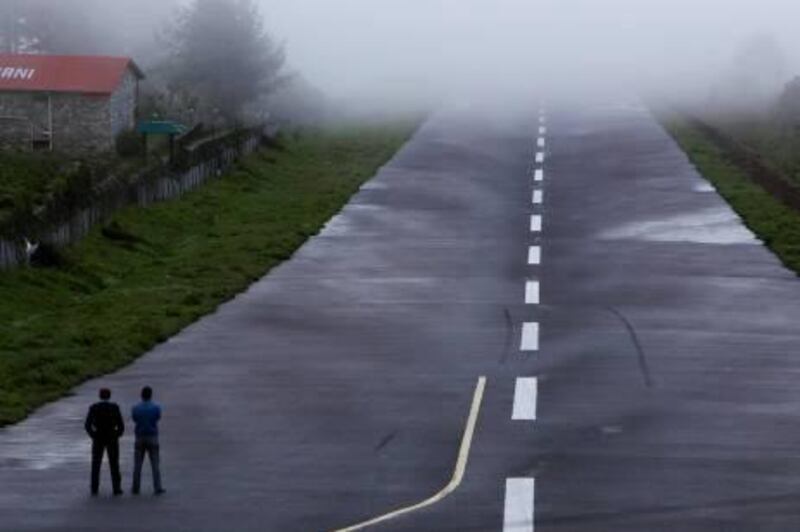LUKLA, Nepal // As soon as the decades-old Twin Otter landed at Lukla airport, passengers burst out in applause. They do that for nearly every safe landing at the often terrifying airport at the gateway to Mount Everest.
At an altitude of 2,843 metres, the small airstrip here has earned a reputation as one of the most extreme and dangerous airports in the world. The single runway is narrow, short and sloped. Miss the runway by a few metres and the plane would hit a mountain.
"After you cross the river there is no turning back, you have to land," said Pramod Poudel, a Tara Air pilot who has flown hundreds of these flights to Lukla.
Carved out of the side of a mountain, the airport was built by Sir Edmund Hillary in 1965 - 12 years after he and Tenzing Norgay became the first men to conquer the world's highest peak - to help the local yak herders known as Sherpas spur development in the impoverished area.
Now what once was a dirt strip is one of Nepal's busiest airports, the Tenzing-Hillary Airport. The thousands of mountaineers and trekkers who visit the Everest region have to fly to the airport if they want to avoid a day-long bus trip from Kathmandu and five days of trekking to reach here.
The airport has handled up to 79 flights on one day - far beyond the acceptable capacity for such a facility, said Rinji, the airport's air-traffic controller, who, like most Sherpas in the Everest region, uses only one name.
"It is really challenging, because of the geographical location of the airport and high mountains that surround it. Topography is challenging and the traffic volume is challenging," said Rinji. "There is little space for aircraft to manoeuvre because of the high mountains and narrow valley."
Crashes are not uncommon.
In 2008, 18 people were killed when a Twin Otter plane belonging to the domestic Yeti Airlines smashed into the side of the runway and caught fire while trying to land in heavy fog. Investigators said the pilot should not have attempted to land in those conditions.
In August 2010, 14 people were killed when a Dronier belonging to the domestic Agni Air crashed after it was forced to turn around because of bad weather at Lukla. In May 2004, another Yeti Airlines Twin Otter crashed while approaching Lukla, killing all three occupants in an accident blamed on heavy cloud build-up and pilot misjudgement.
In addition to trekkers, the flights bring in food, construction materials and other supplies required by the local population in this poor area.
And it has changed life here.
Once a tiny village, Lukla now has 3,000 people, many of them drawn to tourism work. Sherpas wait outside the airport hoping to be hired as porters by trekkers staying in the mountains for anywhere from a few days to a month.
A man named Funru said his father once owned the land where the airport sits and helped Hillary dig the airstrip.
"When I first began working at the airport, it used to be nothing like this. It was like a river bank. Every evening we had to collect rocks and fill the potholes so flights could land the next morning," Funru said.





